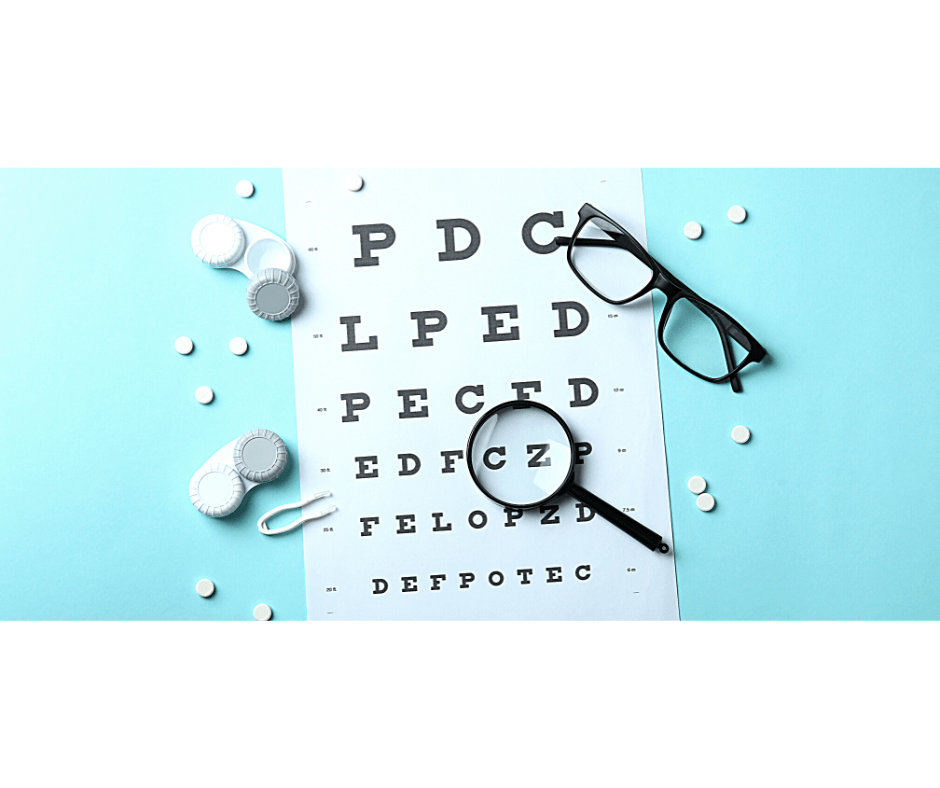As you age, you’ll notice several parts of your body change. You may find that you’re achy or can’t move as fast as you used to. One area of your health you may not think about changing as you age is your eyesight.
“Vision changes are a natural part of aging,” said optometrist Dr. Inna Lazar. “But so many Americans don’t get their eyes regularly examined and aren’t proactive about their eye health. There are also many simple fixes for aging eyes, including affordable reading glasses and innovative eyewear solutions.”
If you want to take care of your sight but don’t know where to start, check out these six tips for protecting your eyes as you age.
1. Review your family eye health history
Just like you inherit your eye color from your parents, they may pass down eye diseases and conditions that develop as you age. Talk with your family about their eye health history to determine if you’re at higher risk for developing an eye disease or condition. Make sure to let your primary care physician and optometrist know about any genetic eye conditions so you can be proactive about diagnosis and care.
2. Notice changes to your vision
Our eyes change slowly as we age, so you might not notice eye issues immediately. One common eye condition you’ll likely develop as you age is presbyopia, the gradual loss of your ability to focus on nearby objects. A telling sign of this condition is holding books, newspapers, and other reading materials farther away so you can read them. While annoying, this eye problem isn’t serious and can often be managed with reading glasses or bifocal glasses.
If you’re in the market for a pair of readers, consider Foster Grant. Foster Grant Pop of Power Bifocal Style Readers is an excellent solution to allow you to experience clear vision up close and far away, without having to remove your glasses. The bottom segment of each lens is magnified for reading while the rest has no magnification, and the entire lens helps filter potentially harmful blue light from digital devices and other light sources. The collection consists of eight styles with seven diopters ranging from +1.25 – +3.00.
3. Protect your sight by eating right
Having a healthy, balanced diet isn’t just good for your waistline. According to the American Academy of Ophthalmology, nutrition can help protect your eyesight. Focus on eating eye-healthy foods like orange-colored vegetables and fruits like carrots, cold-water fish with omega-3 fatty acids, and leafy green vegetables.
4. Get examined
An eye exam can identify potential eye issues in their early stages when they’re easiest to treat. According to WebMD, if you don’t have existing eye issues and are younger than 40, you should get a routine eye exam every 2 years. As you get older, exams should be more frequent to catch any changes to your sight.
If you are experiencing symptoms or have a family history of eye problems, it’s a good idea to have a comprehensive dilated eye exam. This exam can help identify common vision problems as well as glaucoma and other eye diseases.
5. Protect your eyes
When you think of eye protection, you probably imagine safety goggles, eye shields, and sports glasses. But one piece of eye protection you should use regularly is a pair of sunglasses.
According to the American Optometric Association, overexposure to solar radiation over time can increase your risk of cataracts, eye cancer, and macular degeneration. You can protect your eyes by purchasing sunglasses that block 100% of UV-A and UV-B radiation. Pick a stylish pair so you can look good while caring for your eyesight. All eyewear from Foster Grant is 100% UVA/UVB protective.
6. Rest your eyes
Just like when you exercise your muscles, your eyes can become fatigued from overuse. If you spend most of your day looking at screens, you may experience eyestrain. To give your eyes a break, look away from your screen every 20 minutes at something 20 feet away for 20 seconds. Also, consider using blue light reading glasses, like Pop of Power Bifocal Style Blue Light Readers, which block 30% of potentially harmful blue light produced by computers and other artificial and natural sources, including the sun. To learn more, visit www.FosterGrant.com.
Be proactive and protect your eyes. Using these six tips, you can give your sight the best chance of staying healthy as you age.
Source: BPT








